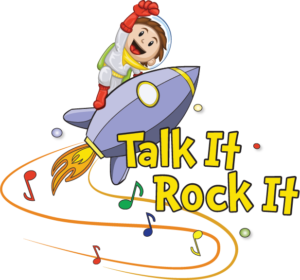This summer due to Covid-19, we have been caring for our 2 granddaughters, ages 19 months and 5 years, 2 days per week. What a joy that has been! Being a grandma is simply the BEST!!! From finding frogs outside to conversing about imaginary friends, every minute is a blast.
Of course, I put my speech-language pathologist (SLP) hat on throughout my day. I did early intervention for 25 years, so enhancing speech and language skills during daily routines is part of my being. I can’t separate my SLP-ness with my grandma-ness. They are one and the same. 😊
I wish I could show you a picture of my granddaughters, but to protect their privacy, I will not post one. You just have to use your glorious imagination and trust me that they are the most adorable little creatures that ever walked the earth. (Spoken from a true grandma, right? Lol) Both have totally different personalities. Both adore each other, but also have moments where one gets on the other’s nerves. 😊 I enjoy watching their interactions, and I love being a part of the mix.
Let’s talk about techniques!
There have been some affirming moments that the techniques I taught parents over the years really work. I thought I would share some of those thoughts, techniques, and activities. They are simple. They are probably things you do routinely in your work as SLPs. They are probably things you naturally do as parents. I simply want to support you in your journeys.
I have learned so much, though, during these past few months. I have seen the daily challenges and joys of caring for young children. As a retired grandma, though, I have so much more patience, so much more time, and, I think, more wisdom than I did when I raised my own children. I have more skills for supporting and empowering my little sweeties. There are many things I wish I could re-do with my own kids, but that’s a different story at a different time. 😊
So, let’s start with my first TOTALLY RANDOM thought.
My favorite gesture – CHEERS –
Gestures are the greatest predictors of language development in young children. This is one area that I always encourage in young children and my young granddaughters were no exception. For a great summary of important gestures, go here https://firstwordsproject.com/about-16by16/ . At times, we focus too quickly on getting a child to talk. Don’t rush into that without at least some focus on communicating with your hands and your eyes. Gestures and signs will decrease a child’s frustration, will increase verbalizations, and will establish social connections with others.
One gesture I used with both of my grandkids is “cheers.” Cheers is very social, usually creates a smile and encourages a visual connection to others. When you both have a cup, initially approach you cup with your child’s and say, “Cheers.” Take turns with others in the room so that your child can see the desired response. After you tap each other’s glass and say, “Cheers,” take a drink, and sign.
It’s that simple. Cheers! Perhaps you may need a glass of wine instead of a glass of water. That’s your decision. Who am I to judge. 😊
Think about all of the gestures suggested in the 16×16 brochure. Discuss with parents how they can practice these gestures during daily routines. Challenge parents to use a gesture in at least 5 daily routines each day. Guide their child’s hand if needed to help him/her learn it. Most of all, have fun with gestures!


